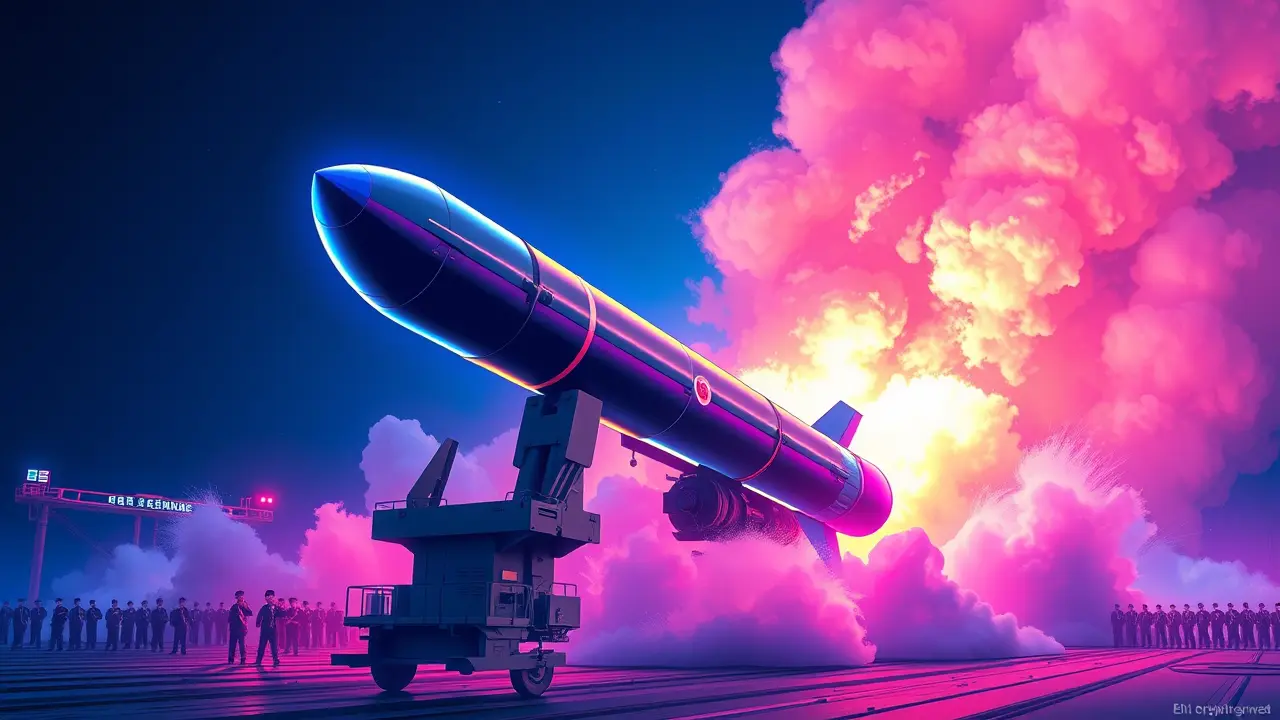New large North Korean missile displayed in parade.
The geopolitical chessboard just shuddered with the unveiling of the Hwasongpho-20, a new large North Korean intercontinental ballistic missile paraded before the world with chilling theatricality. Its sheer size isn't just for show; it's a direct signal, a calculated escalation in Pyongyang's long-standing strategy of brinkmanship.Analysts poring over the grainy parade footage immediately noted its dimensions, which strongly suggest a capability that moves beyond a single-warhead deterrent to a more sophisticated, and far more dangerous, multiple independently targetable re-entry vehicle (MIRV) system. This isn't merely another missile; it's a potential game-changer.To understand the risk, we must look at the scenario tree. A MIRV-capable Hwasongpho-20 would fundamentally alter the strategic calculus for the United States and its allies in the region, primarily South Korea and Japan.Currently, missile defense systems like the Ground-Based Midcourse Defense are designed to intercept a limited number of incoming warheads. A single North Korean ICBM that can deploy multiple warheads, and likely decoys, would simply overwhelm these defenses, rendering them potentially obsolete and critically undermining the credibility of the US nuclear umbrella.This development didn't occur in a vacuum. It follows a pattern of relentless testing, including the launch of a purported solid-fuel engine, which allows for faster mobilization and launch, reducing the warning time for adversaries from days to minutes.The parade itself is a classic Kim Jong-un maneuver, a piece of political theater designed for dual audiences: a domestic populace shown the regime's unassailable strength, and an international community served a stark reminder of its growing isolation and the failure of decades of sanctions and diplomatic efforts, from the Six-Party Talks to the high-profile summits with former President Trump. The timing is also suspect, often coinciding with political transitions in Seoul or Washington or moments of international distraction, such as the ongoing war in Ukraine, a conflict from which North Korea has not only drawn lessons on asymmetric warfare but has also become a significant arms supplier to Russia, deepening a partnership that could provide it with much-needed technological and economic respite.The immediate consequence is a rapid acceleration of the regional arms race. We can expect intensified calls in South Korea for the redeployment of US tactical nuclear weapons or for the development of an indigenous nuclear arsenal, a move that would shatter non-proliferation norms.Japan will face renewed pressure to significantly increase its defense spending and potentially acquire strike capabilities against enemy bases, a controversial shift from its post-war pacifist constitution. For China, North Korea's primary patron, this presents a familiar dilemma: a destabilizing ally that serves as a strategic buffer against US influence but whose provococations risk drawing Beijing into a conflict it desperately seeks to avoid.The Hwasongpho-20, therefore, is more than a weapon; it is a symbol of a hardening stalemate. Diplomatic avenues appear frozen, with the 'maximum pressure' campaign having yielded little but a more resilient and capable Hermit Kingdom.The Kim regime has effectively calculated that its security is guaranteed not by treaties or normalized relations, but by the possession of an undeniable, survivable, and overwhelming nuclear deterrent. This new missile is the physical manifestation of that doctrine, pushing the peninsula closer to a permanent, and perilously armed, standoff where the margin for miscalculation grows terrifyingly thin.The risk scenario now includes not just a deliberate attack, but an accidental launch, a misinterpreted military exercise, or a catastrophic failure of command and control during a crisis. The world is watching, but Pyongyang is no longer just seeking attention; it is demonstrating a new, more potent form of coercion, and the clock on finding a viable diplomatic solution is ticking faster than ever.
It’s quiet here...Start the conversation by leaving the first comment.
© 2025 Outpoll Service LTD. All rights reserved.
